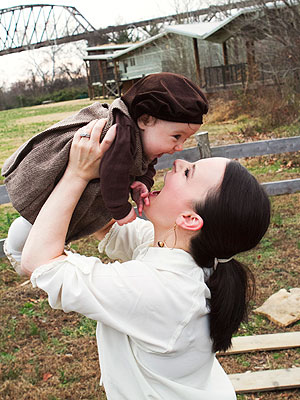MOSCOW (Reuters) - The Group of 20 nations declared on Saturday there would be no 'currency war' and deferred plans to set new debt-cutting targets in an indication of concern about the fragile state of the world economy.
Japan's expansive policies, which have driven down the yen, escaped criticism in a statement thrashed out in Moscow by financial policymakers from the G20, which groups developed and emerging markets and accounts for 90 percent of the world economy.
After late night talks, finance ministers and central bankers agreed on wording closer than expected to a joint statement issued last Tuesday by the Group of Seven rich nations backing market-determined exchange rates.
A draft communique seen by delegates on Friday had steered clear of the G7's call for economic policy not to be targeted at exchange rates. But the final version included a G20 commitment to refrain from competitive devaluations and stated monetary policy would be directed at price stability and growth.
"The language has been strengthened since our discussions last night," Canadian Finance Minister Jim Flaherty told reporters. "It's stronger than it was, but it was quite clear last night that everyone around the table wants to avoid any sort of currency disputes."
The communique did not single out Japan for aggressive monetary and fiscal policies that have seen the yen drop 20 percent, a trend that may now continue.
"The market will take the G20 statement as an approval for what it has been doing -- selling of the yen," said Neil Mellor, currency strategist at Bank of New York Mellon in London. "No censure of Japan means they will be off to the money printing presses."
The statement reflected a substantial, but not complete, endorsement of Tuesday's statement by the G7 nations - the United States, Japan, Britain, Canada, France, Germany and Italy.
"We all agreed on the fact that we refuse to enter any currency war," French Finance Minister Pierre Moscovici told reporters.
NO FISCAL TARGETS
The text also contained a commitment to credible medium-term fiscal strategy, but stopped short of setting specific goals.
A debt-cutting pact struck in Toronto in 2010 will expire this year if leaders fail to agree to extend it at a G20 summit of leaders in St Petersburg in September.
European Economic and Monetary Affairs Commissioner Olli Rehn said he expected concrete debt targets to be agreed at the September meeting.
"We have a common view on the need to have a credible medium-term plans for fiscal consolidation, which is also essential so we have foundation for sustainable growth," he told Reuters.
The United States says it is on track to meet its Toronto pledge but argues that the pace of future fiscal consolidation must not snuff out demand. Germany and others are pressing for another round of binding debt-cutting goals.
Backing in the communique for the use of domestic monetary policy to support economic recovery reflected the U.S. Federal Reserve's commitment to monetary stimulus through quantitative easing, or QE, to promote recovery and jobs.
QE entails large-scale bond buying -- $85 billion a month in the Fed's case -- that helps economic growth but creates money, much of which has leaked into emerging markets, threatening to destabilize them.
That was offset in the communique by a commitment to minimize "negative spillovers" of the resulting financial flows that emerging markets fear may pump up asset bubbles and ruin their export competitiveness.
"Major developed nations (should) pay attention to their monetary policy spillover," Vice Finance Minister Zhu Guangyao was quoted by state news agency Xinhua as saying in Moscow.
"Major developed countries' implementation of excessively relaxed currency policy has an influence on the world economy."
Russia, this year's chair of the G20, said the group had failed to reach agreement on medium-term budget deficit levels and also expressed concern about ultra-loose policies that it and other big emerging economies say could store up trouble for later.
Finance Minister Anton Siluanov said a rebalancing of global growth required more than an adjustment of exchange rates.
"Structural reforms in all countries, either with a positive or negative balance of payments, should play a bigger role," he said in an address to Saturday's talks.
The G20 put together a huge financial backstop to halt a market meltdown in 2009 but has failed to reach those heights since. At successive meetings, Germany has pressed the United States and others to do more to tackle their debts. Washington in turn has urged Berlin to do more to increase demand.
On currencies, the G20 text reiterated its commitment last November, "to move more rapidly toward mores market-determined exchange rate systems and exchange rate flexibility to reflect underlying fundamentals, and avoid persistent exchange rate misalignments".
It said disorderly exchange rate movements and excess volatility in financial flows could harm economic and financial stability.
(Additional reporting by Gernot Heller, Lesley Wroughton, Maya Dyakina, Tetsushi Kajimoto, Jan Strupczewski, Lidia Kelly, Katya Golubkova, Jason Bush, Anirban Nag and Michael Martina. Writing by Douglas Busvine. Editing by Timothy Heritage/Mike Peacock)













